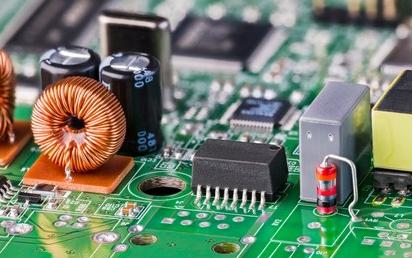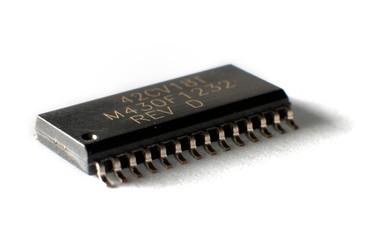Content Menu
● Understanding Surface Mount Technology (SMT)
>> Advantages of SMT
>> Disadvantages of SMT
● Understanding Through-Hole Technology (THT)
>> Advantages of THT
>> Disadvantages of THT
● Key Differences Between SMT and THT
● Applications of SMT and THT
>> SMT Applications
>> THT Applications
● Cost Considerations
● Conclusion
● Related Questions
>> 1. What are the main advantages of using Surface Mount Technology?
>> 2. In what scenarios is Through-Hole Technology preferred?
>> 3. How does the assembly process differ between SMT and THT?
>> 4. Can SMT components be repaired easily?
>> 5. What impact does component size have on PCB design?
In the world of electronics, the choice of component mounting technology can significantly impact the design, performance, and manufacturability of a product. Two primary methods dominate this landscape: Surface Mount Technology (SMT) and Through-Hole Technology (THT). This article delves into the differences between these two approaches, exploring their advantages, disadvantages, and applications, while also referencing insights from [Surface Mount Device Wikipedia]

Understanding Surface Mount Technology (SMT)
Surface Mount Technology involves mounting electronic components directly onto the surface of printed circuit boards (PCBs). This method has gained popularity due to its ability to accommodate smaller components and higher component density, which is essential in modern electronics where space is at a premium.
Advantages of SMT
- Space Efficiency: SMT allows for a more compact design, enabling manufacturers to fit more components into a smaller area.
- Automated Assembly: SMT is well-suited for automated assembly processes, which can significantly reduce labor costs and production time.
- Performance: SMT components typically have shorter lead lengths, which can improve electrical performance by reducing inductance and resistance.
Disadvantages of SMT
- Mechanical Strength: SMT components can be less robust than their through-hole counterparts, making them more susceptible to mechanical stress.
- Repairability: Repairing SMT components can be more challenging due to their small size and the complexity of the soldering process.
Understanding Through-Hole Technology (THT)
Through-Hole Technology has been a staple in electronics manufacturing for decades. This method involves inserting component leads through holes drilled in the PCB and soldering them on the opposite side.
Advantages of THT
- Mechanical Stability: THT components are generally more robust and can withstand higher mechanical stress, making them suitable for applications where durability is critical.
- Ease of Manual Assembly: THT is often easier to handle and solder manually, which is beneficial for prototyping and low-volume production.
Disadvantages of THT
- Space Consumption: THT components require more space on the PCB, which can limit design flexibility.
- Longer Assembly Time: The manual insertion and soldering process can be time-consuming, leading to higher labor costs in mass production.
Key Differences Between SMT and THT
| Feature | Surface Mount Technology (SMT) | Through-Hole Technology (THT) |
| Component Size | Smaller components | Larger components |
| Mounting Method | Surface-mounted | Inserted through holes |
| Assembly Process | Automated | Manual or automated |
| Space Efficiency | High | Low |
| Mechanical Strength | Lower | Higher |
| Repairability | More difficult | Easier |
Applications of SMT and THT
Both SMT and THT have their unique applications based on their characteristics.
SMT Applications
- Consumer Electronics: Smartphones, tablets, and laptops often utilize SMT due to the need for compact designs.
- High-Density Circuit Boards: SMT is ideal for applications requiring a high number of components in a limited space, such as in telecommunications and networking equipment.
THT Applications
- Power Electronics: THT is commonly used in power supplies and high-power applications where mechanical strength is crucial.
- Prototyping: Many engineers prefer THT for prototyping due to its ease of manual assembly.
Cost Considerations
When comparing SMT and THT, cost is a significant factor. SMT generally has lower production costs due to its compatibility with automated assembly processes. However, the initial setup costs for SMT can be higher due to the need for specialized equipment.
Conclusion
In conclusion, the choice between Surface Mount Technology and Through-Hole Technology depends on various factors, including design requirements, production volume, and application needs. SMT offers advantages in terms of space efficiency and automation, making it suitable for modern electronic devices. In contrast, THT provides mechanical stability and ease of manual assembly, making it ideal for specific applications. Understanding these differences is crucial for engineers and designers to make informed decisions that align with their project goals.

Related Questions
1. What are the main advantages of using Surface Mount Technology?
Answer: The main advantages of SMT include space efficiency, compatibility with automated assembly, and improved electrical performance due to shorter lead lengths.
2. In what scenarios is Through-Hole Technology preferred?
Answer: THT is preferred in applications requiring high mechanical strength, such as power electronics, and in prototyping where manual assembly is beneficial.
3. How does the assembly process differ between SMT and THT?
Answer: SMT typically involves automated assembly processes, while THT often requires manual insertion and soldering of components.
4. Can SMT components be repaired easily?
Answer: SMT components are generally more difficult to repair due to their small size and the complexity of the soldering process compared to THT components.
5. What impact does component size have on PCB design?
Answer: Smaller component sizes in SMT allow for more compact PCB designs, enabling higher component density and more complex circuit layouts.



















